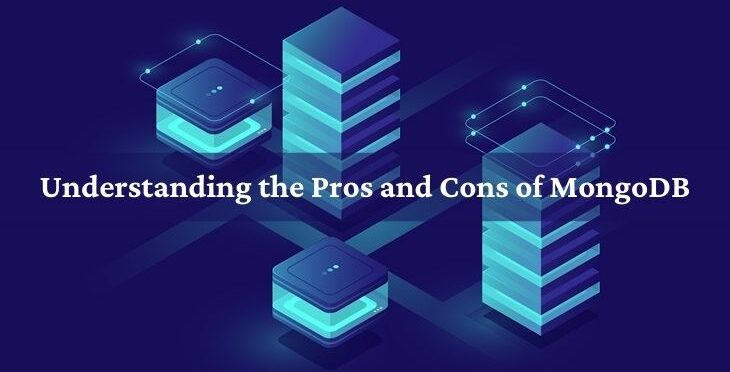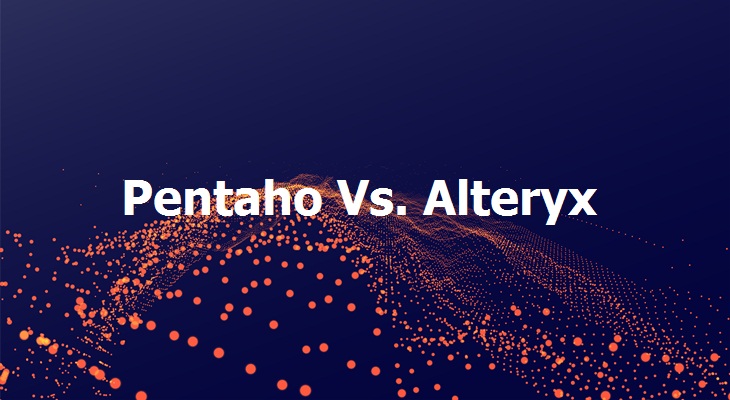MongoDB is a NoSQL document database. It is an open-source document-based tool used for high-volume data storage.
MongoDB was founded in 2007 and today has a global community of developers. It has expanded and reached out to many businesses as it offers features that gel well with their objectives.
It uses both a document-oriented data model and an unstructured query language. It provides scalability and flexibility for developers to easily use and learn the tool.
MongoDB is built on a scale-out architecture that allows developers to build applications using agile methods. It is popular among developers as it helps them build internet and business applications.
MongoDB has its pros and cons that need to be addressed. Businesses should understand the pros that MongoDB offers and the cons that it possesses.
The Pros and Cons for Businesses in using MongoDB:
Companies and development teams of all sizes and industries recommend MongoDB regardless of its various pros and cons. Bosch, Barclay, Morgan Stanley, etc are just a few of their major clients.
It provides solutions for businesses in IoT, gaming, logistics, banking, e-commerce, content management, etc. It seems that MongoDB’s pros are such that its cons can be overlooked.
Hence, we need to delve deep into the pros and cons of MongoDB for businesses to understand its features and dynamic nature.
Performance Levels
MongoDB stores most of the data in the RAM. It allows a quicker performance while executing queries.
It collects the data directly from the RAM than the hard disk and the returns come back faster. It is important to have a system with RAM and accurate indexes for enhanced performance levels.
High Speed and Higher Availability
MongoDB is a document-based database solution. It has attributes like replication and gridFS.
Its attributes allow an increase in data availability. It is also easy to access documents using indexing.
MongoDB performs 100 times faster than other relational databases and provides high performance.
Simplicity
MongoDB offers a simple query syntax that is much easier to grasp than SQL. It provides an expressive query language that users find helpful during development.
Easy Environment and a Quick Set-up
The installation, setup, and execution for MongoDB are quick and simple. It is faster and easier to set up than RDBMS and offers modern JavaScript frameworks.
This feature has allowed users to confidently select NoSQL structures. It also provides quicker learning and training opportunities than SQL databases.
Flexibility
MongoDB’s schema is not predefined. It means that it has a dynamic schematic architecture that works with non-structured data and storage.
Businesses keep evolving and so do the data they maintain. It is important to have a flexible database model that could adapt to these changes.
Sharding
MongoDB uses sharding while handling large datasets. Sharding is the process of dividing data from a large set and distributing it to multiple servers.
In case, there is an issue where the server cannot handle the data due to its size, it automatically divides it further without pausing the activity.
Scalability
Scalability is one of the most important advantages of MongoDB. As seen, MongoDB uses “sharding”, which expands the storage capacity.
Unlike SQL databases that use vertical scalability, sharding allows MongoDB to use horizontal scalability.
Ad-hoc Query Support
An ad-hoc query is a non-standard inquiry. It is generated to gain information if and when required.
MongoDB offers an enhanced ad-hoc queries feature. This allows an application to prepare for fore coming queries that may occur in the future.
Documentation
MongoDB is in the class of “Document Stores”, here the term document refers to data collection.
MongoDB offers accurate documentation which means it does not tether with the data while processing it for storage. It serves the data for each version, edition, or requirement to assist users with an excellent documentation process.
Technical Support
MongoDB offers technical support for the various services that it provides. There is technical support for the community forums, Atlas or Cloud Manager as well as Enterprise or Ops Manager.
In case of any issues, the professional customer support team is ready to assist clients.
Transactions
Transactions refer to the process of reviewing and eliminating unwanted data. MongoDB uses multi-document ACID (Atomicity, Consistency, Isolation, and Durability) transactions.
The majority of the application does not require transactions, although there are a few that may need it to update multiple documents and collections. This is one of the major limitations with MongoDB as it may lead to corruption of data.
Joins
Joining documents in MongoDB can be a very tedious task. It fails to support joins as a relational database.
Although there are teams deployed to fix this disadvantage, it is still in the initial stages and would take time to mature.
Users can utilize joins functionality by manually adding the code. But acquiring data from multiple collections requires multiple queries and this may lead to scattered codes and consume time.
Indexing
MongoDB offers high-speed performance with the right indexes. In case if the indexing is implemented incorrectly or has any discrepancies, MongoDB will perform at a very low speed.
Fixing the errors in the indexes would also consume time. This is another one of the major limitations of MongoDB.
Limited Data Size and Nesting
MongoDB allows a limited size of only 16 MB for a document. Performance nesting for documents is also limited to only 100 levels.
Duplicates
Another one of the major limitations of MongoDB is the duplication of data. The limitation makes it difficult to handle data sets as the relations are not defined well.
Eventually, the duplication of data may lead to corruption as it is not ACID compliant.
High Memory Usage
MongoDB requires a high amount of storage due to the lack of joins functionalities which lead to the duplication of data. There is an increase in data redundancy which takes up unnecessary space in the memory.
According to Barry Devlin, BI Consultant, Speaker, and Author, “As always, there are pros and cons. Avoiding storing and maintaining a second copy of large volumes of data is always a good thing. And if the analysis doesn’t require joining with data from another source, using the original source data can be advantageous. There are always questions about performance impacts on the operational source, and sometimes security implications as well.”
He went on to say about some of the pros and cons of MongoDB, “However, the main question is around the types of query possible against a NoSQL store in general or a document-oriented database in this case. It is generally accepted that normalizing data in a relational database leads to a more query-neutral structure, allowing a wider variety of queries to be handled.”
Conclusion:
MongoDB’s pros outgrow its cons and this is why a lot of businesses seek its solutions to enhance their products, services, and applications.
Forbes gains 58% faster build time, it enhances its release cycle by 4x. MongoDB Atlas along with Google Cloud has helped the company support a 28 % increase in subscriptions and reduces TCO by 25 %.
Toyota with the collaboration of MongoDB Atlas and Azure creates smart, autonomous, and safe factories of the future. They aim to be the pioneers in Industry 4.0 and MongoDB and Microsoft Azure can help them reach there according to Filip Dadgar, Principal System Architect and IT-Manager at Toyota Material Handling Europe.
You may like to read:
Redis Vs. MongoDB: Key Differentiating Parameters
Understanding Mean Stack, its Advantages, Disadvantages, and Use Cases





